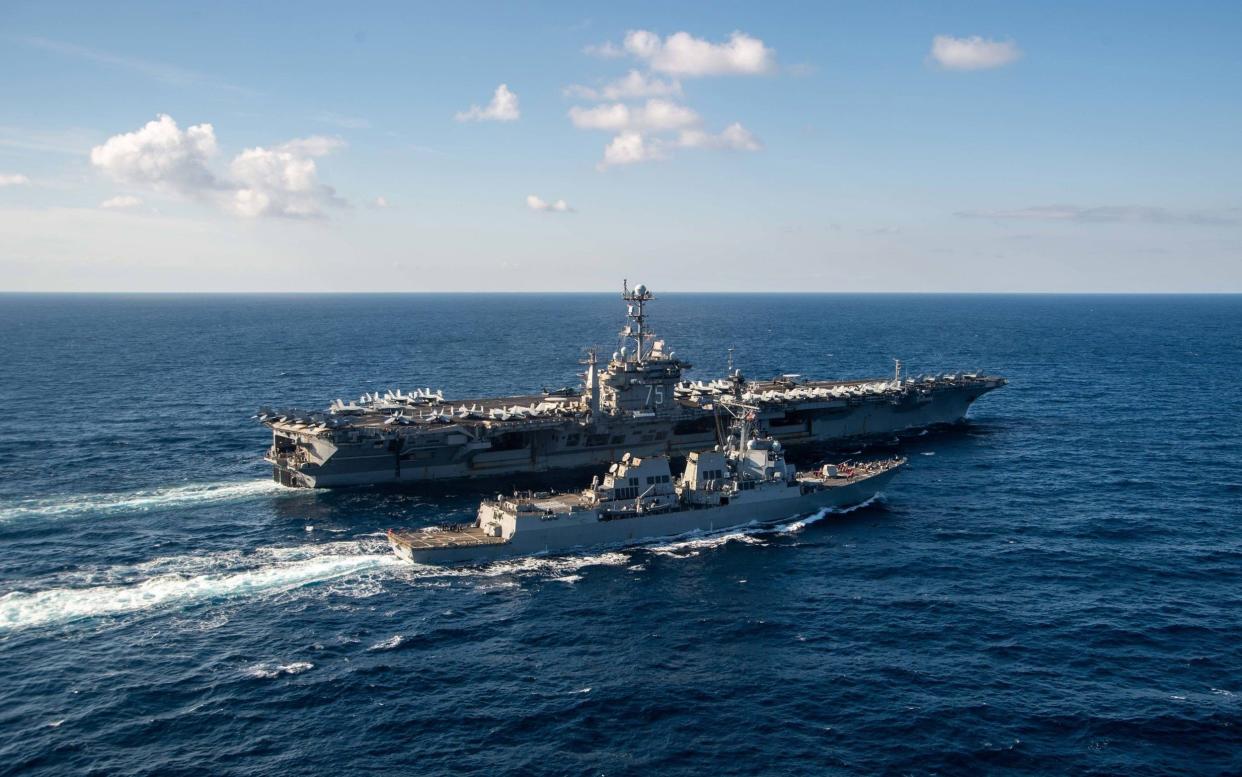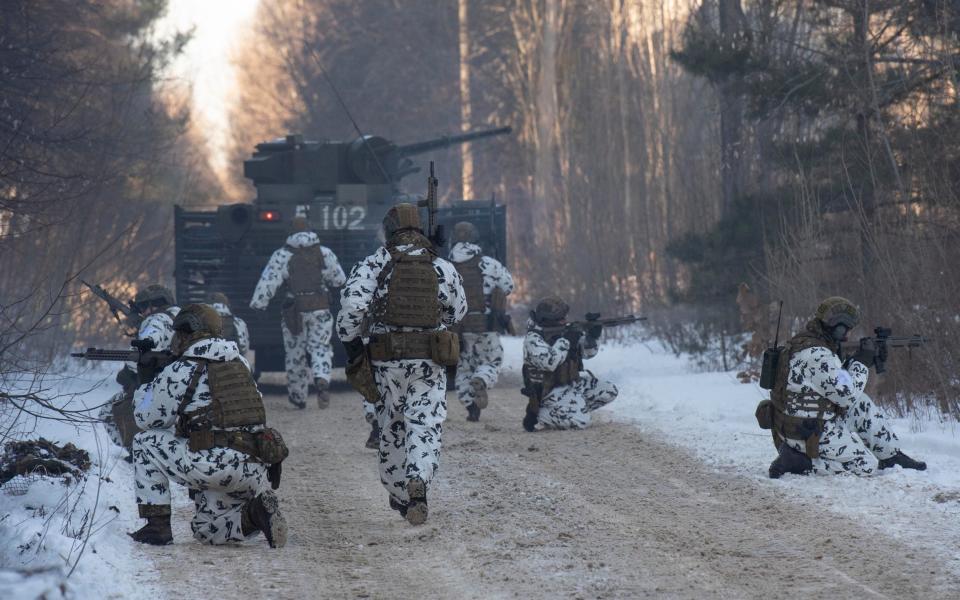Nato takes control of US Carrier Strike Group in show of strength to Russia

Nato countries have put on a show of strength to Russia after the US transferred control of its Carrier Strike Group to the alliance for the first time since the Cold War.
Commanders on board the Harry S Truman aircraft carrier told The Telegraph that a secret activity over two and half weeks in the Mediterranean was designed to demonstrate that “Nato stands as one”.
James Morley, the Deputy Commander of the Naval Striking and Support Forces at Nato, said: “Nato stands to reassure and protect its allies and that Nato is prepared for the worst should that happen.”
He added that “it reflects a desire to be ready to integrate the carrier into the European side”.
His comments come as Russia is on the brink of invading Ukraine, having massed 100,000 troops on the border.
On Friday Downing Street said it had "high confidence" Russia was planning to “engineer a pretext blaming Ukraine for an attack in order to justify a Russian incursion into Ukraine”.
The Prime Minister’s official spokesman confirmed that the Government was “considering options for further military deployments to support Nato's eastern flank, we're not at the stage of setting out details yet but we will come forward with those in due course”.

Ben Wallace, the Defence Secretary, is due to meet his Russian counterpart in Moscow imminently, although has admitted that he is “not optimistic” that a Russian invasion could be stopped.
As part of the exercise the ‘Truman Group’ CSG, which was joined by nine squadrons, four destroyers, a frigate and a cruiser, worked with 13 other nations as Nato took charge of where the US CSG operated and for how many days - key things normally decided by the US.
UK units led operations, mission planning, as well as working in communications and in intelligence throughout.
Admiral Morley added that the activity was “significant” because the US has “not passed over command of a carrier group into Nato since the end of the Cold War”.
“For a large period of that time Nato effort was directed at operations in the Middle East and Europe was a lower priority.”
He said that while Russian maritime activity has been “slightly higher than normal” over recent weeks, “all interactions have been entirely professional”.
However, now with the ongoing situation on the Ukrainian border, the deployment was “a visible demonstration of our ability to operate in Europe with Nato allies”.
He explained that it was similar to Nato having “put battlegroups into nations adjacent to Ukraine to provide reassurance and increase readiness and to act as a deterrent”.
“It goes back to providing reassurance to our partners and allies in the region,” Admiral Morley added.
“The requirement to do that is higher than at any time. Clearly our ability to operate a Carrier in a demanding, conjected and contested environment is something we need to rehearse.”
“It’s an opportunity to train and rehearse as we might have to fight the principal threats that Nato faces.”

 Yahoo News
Yahoo News 
